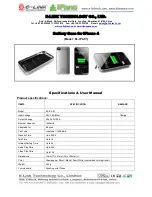
NSW-5
System Module UT5U
PAMS Technical Documentation
Page 14
Issue 1 10/00
Nokia Mobile Phones Ltd.
wise preferred control channel. Also registration (TX on) happens occa-
sionally, where phone sends its information on Reverse Control Channel
(RECC) to base station and the phone’s location is updated in the switch-
ing office.
If a call is initiated, either by the user or base station, the phone moves to
analog voice channel or digital traffic channel mode depending on the or-
ders by the base station.
Analog Voice Channel Mode (AVCH)
The phone receives and transmits analog audio signal. All circuitry is
powered up except digital rx–parts. In this mode DSP does all the audio
processing, and in the Hands Free (HF) mode it also performs echo–can-
cellation and the HF algorithm. COBBA makes AD–conversion for MIC
signal, and DA–conversion for EAR signal.
With audio signal also SAT (Supervisory Audio Tone) is being received
from the base station. The SAT signal can be 5970 Hz, 6000Hz or 6030
Hz, the frequency being defined by the base station. DSP’s DPLL phase
lock loops to SAT, detects if the SAT frequency is the expected one and
examines the signal quality. DSP reports SAT quality figures to MCU reg-
ularly. The received SAT signal is transponded (transmitted back) to base
station.
Base station can send signalling messages on Forward Voice Channel
(FVC) to the phone, by replacing the audio with a burst of Wide Band
Data (WBD). Typically these are handoff or power level messages. Sys-
tem Logic RX–modem is used for receiving the signalling message burst,
after which it gives interrupt to MCU for reading the data. During the burst
audio path must be muted; MCU gives message to DSP about this. MCU
can acknowledge the messages on Reverse Voice Channel (RVC), where
DSP sends the WBD to transmitter RF.
Digital Control Channel Mode (DCCH)
On digital control channel (DCCH) the DSP receives the paging informa-
tion from the Paging channels. DSP sends messages to MCU for proces-
sing them.
Phone uses sleep mode between received time slots. Then DSP sets the
sleep clock timer and MCU, DSP and RF including VCXO are powered
down. Only sleep clock and necessary timers are running.
From DCCH phone may be ordered to analog control channel or to ana-
log or digital traffic channel.
Digital Traffic Channel Mode (DTCH)
On digital voice channel the DSP processes speech signal in 20 ms time
slots. DSP performs the speech and channel functions in time shared
fashion and sleeps whenever possible. Rx and tx are powered on and off
















































